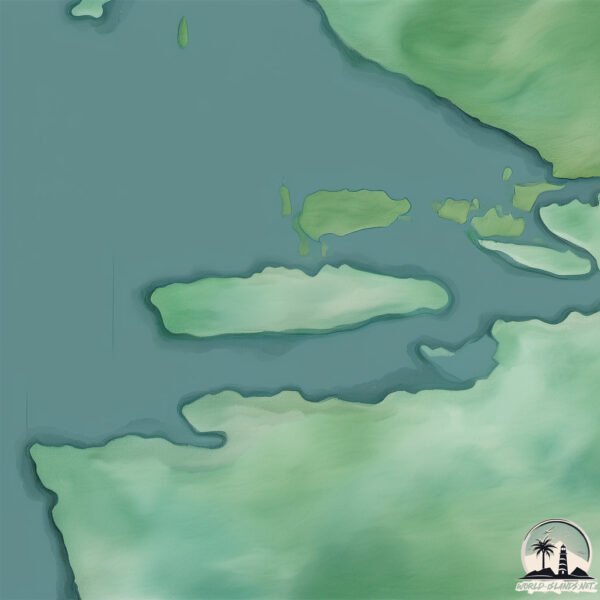Welcome to Fair , a Continental island in the The Coastal Waters of Southeast Alaska and British Columbia, part of the majestic Pacific Ocean. This guide offers a comprehensive overview of what makes Fair unique – from its geography and climate to its population, infrastructure, and beyond. Dive into the details:
Geography and size of Fair
Size: 0.821 km²Coastline: 5.4 kmOcean: Pacific OceanSea: The Coastal Waters of Southeast Alaska and British ColumbiaContinent: North America
Fair is a Tiny Island spanning 0.821 km² with a coastline of 5.4 km.
Archipel: Alexander Archipelago – A group of about 1,100 islands off the southeast coast of Alaska, USA, known for their temperate rainforests and indigenous Tlingit culture.
Tectonic Plate: North America – Covers North America and parts of the Atlantic and Arctic Oceans, characterized by diverse geological features and varying levels of seismic activity.
The geographic heart of the island is pinpointed at these coordinates:
Climate and weather of Fair
Climate Zone: ContinentalClimate Details: Warm-Summer Humid Continental ClimateTemperature: Warm Summer
Climate Characteristics: Features warm summers and cold winters with consistent precipitation, common in higher latitudes.
Topography and nature of Fair
Timezone: UTC-09:00Timezone places: America/AnchorageMax. Elevation: 33 m Mean Elevation: 26 mVegetation: Evergreen Needleleaf ForestTree Coverage: 68%
The mean elevation is 26 m. The highest elevation on the island reaches approximately 33 meters above sea level. The island is characterized by Plains: Flat, low-lying lands characterized by a maximum elevation of up to 200 meters. On islands, plains are typically coastal lowlands or central flat areas.
Dominating Vegetation: Evergreen Needleleaf Forest
Vegetation: 1 vegetation zones – Minimal Diversity Island
Infrastructure and Travelling to Fair
Does the island have a public airport? no .
Does the island have a major port? no .
The mean population of Fair is 0 per km². Fair is Uninhabited. The island belongs to United States of America .
Continuing your journey, Woewodski is the next notable island, situated merely km away.
The Fair Isle Struggle With Loss Of Tourism | Ben Fogle: New Lives In The Wild | Channel 5
Inside Britain's Most Remote Inhabited Island: Fair Isle | Our Tiny Islands | Channel 4
From exceptional enclaves and secluded sanctuaries to awe-inspiring ...
From exceptional enclaves and secluded sanctuaries to awe-inspiring archipelagos and hidden havens, what's it like to live on ...
I Visited The UK's Most Remote Inhabited Island | Fair Isle
Get your free case of wines w/ £9.95 postage over at ...
United States of America is classified as Developed region: G7: Group of Seven – Major advanced economies, including Canada, France, Germany, Italy, Japan, the United Kingdom, and the United States. The level of income is High income: OECD.
News – Latest Updates and Headlines from Fair
Stay informed with the most recent news and important headlines from Fair. Here’s a roundup of the latest developments.
Loading...
Please note: The data used here has been primarily extracted from satellite readings. Deviations from exact values may occur, particularly regarding the height of elevations and population density. Land area and coastline measurements refer to average values at mean high tide.

